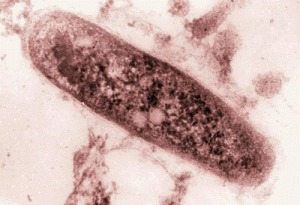by
Brendon Nafziger, DOTmed News Associate Editor | May 25, 2011

Mycobacterium tuberculosis
PET scans of patients co-infected with HIV and drug-resistant tuberculosis could help doctors predict whether life-saving drug treatments will work, according to a new study.
For many patients, drug-resistant TB can be a death sentence. More than two-thirds of patients with multi-drug-resistant TB die from it, according to Dr. Mike Sathekge, lead author of the study. But Sathekge said early detection of drug-resistant strains of TB could help doctors plan appropriate treatment.
In a study published online last week in the Journal of Nuclear medicine, Sathekge and colleagues tried to see if PET scans could help doctors sort out which TB patients co-infected with HIV were most likely to benefit from standard treatment.



Ad Statistics
Times Displayed: 1204
Times Visited: 6 Fast-moving cardiac structures have a big impact on imaging. Fujifilm’s SCENARIA View premium performance CT brings solutions to address motion in Coronary CTA while delivering unique dose saving and workflow increasing benefits.
In the prospective pilot study, 24 HIV patients with tuberculosis underwent 18-FDG PET scans before receiving the usual three-part TB treatment of isoniazid, rifampicin and ethambutol. Four months later, patients were re-scanned. The doctors were trying to gauge the averaged maximum standardized uptake value (SUVmax), which checks glucose metabolic activity, the percent change in SUVmax, and the number of involved lymph node bastions.
The SUVmax of involved lymph nodes, the number of involved lymph node bastions and C-reactive protein levels, as measured by the PET scans, were higher with patients who didn't respond to the treatment, according to the authors. The group said having five involved lymph node bastions was a useful cutoff to separate patients into responder or nonresponder groups.
"In this pilot study, a cutoff of five or more involved lymph node bastions allowed for separation of tuberculostatic responsive and nonresponsive tuberculosis-infected HIV patients with a sensitivity of 88 percent, a specificity of 81 percent, and a negative predictive value of 93 percent," the authors wrote.
Multi-drug-resistant TB represents about 3.6 percent of all TB cases, the researchers said. There were 390,000 to 510,000 such cases in 2008.
Patients with HIV are believed to be highly susceptible to tuberculosis. Nearly 33.2 million people worldwide have HIV, and about one-third of them also have TB, the researchers said.

